Inside Scotland's ancient Bone Caves
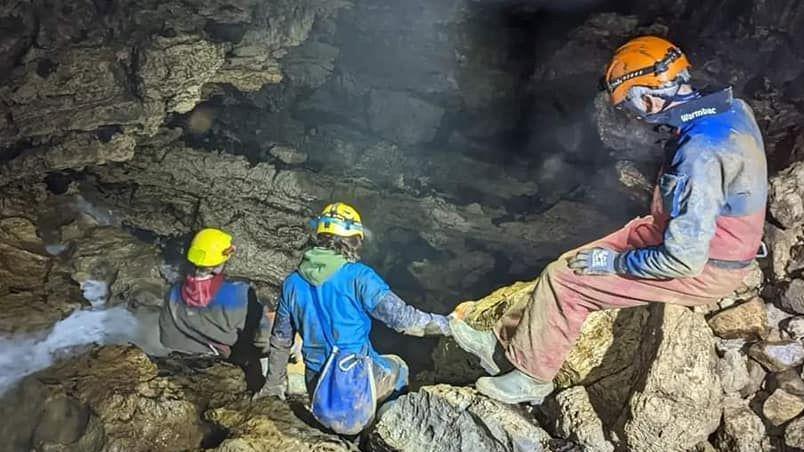
Cavers descend into the Bone Caves' Uamh an Claonaite underground passage
- Published
High on a limestone cliff in the north west Highlands are caves that have fascinated visitors to the area for at least 135 years.
The first scientific excavations of the Bone Caves at Creag nan Uamh, by geologists Ben Peach and John Horne in 1889, uncovered remains of Arctic animals and also evidence the caves were used by hunters about 8,000 years ago.
In the years since Peach and Horne, discoveries have included large chambers, 2 miles (3km) long of underground passages - and a possible polar bear bone.
Speleologists - experts in cave exploration - believe further finds could be made in the area near Inchnadamph in Assynt.
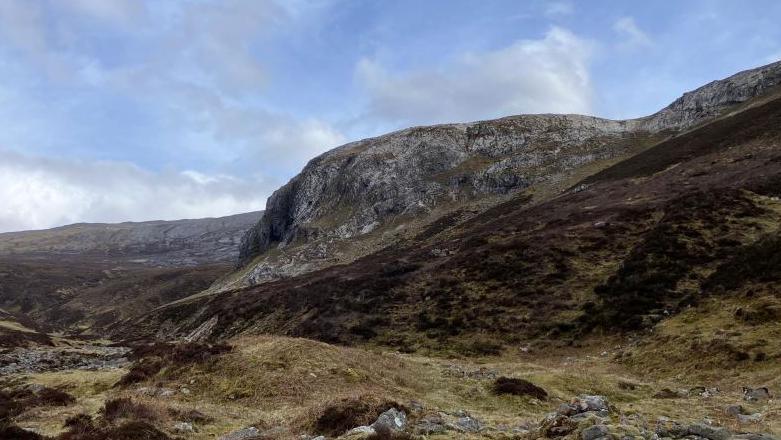
A view to the limestone cliffs near Inchnadamph
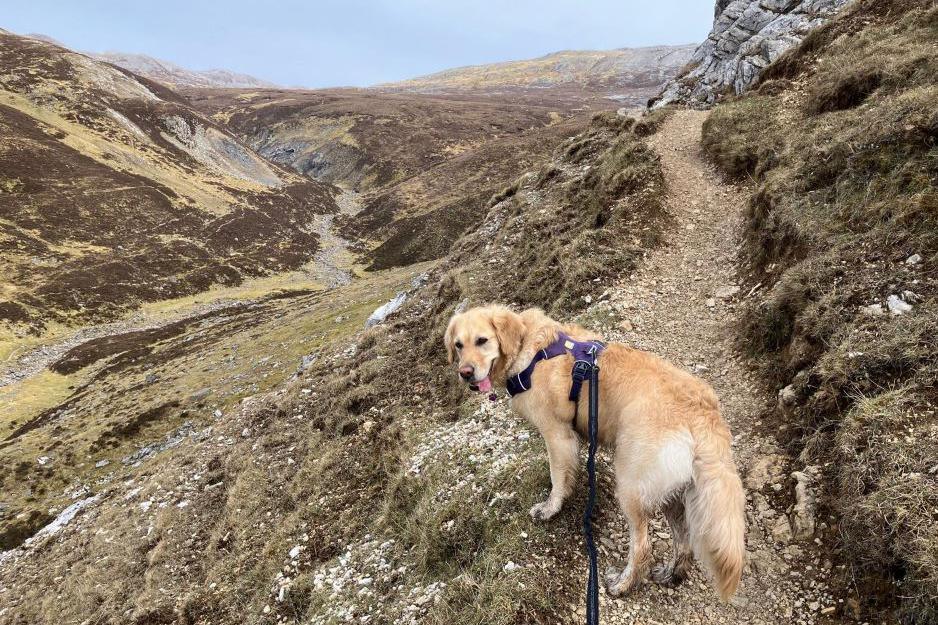
On the rocky trail to the Bone Caves
A rocky trail leads to the imposing cliff at Creag nan Uamh and its four main caves.
There is a warning along the way of the potential risk of rock falls and the ground drops steeply away on one side of the narrow path as it nears the cliff.
At the entrance to the caves, water drips down from the sheer rockface above.
There are views out over the barren hills to the valley below and the rushing waters of Allt na Uamh stream.

The caves were formed hundreds of thousands of years ago
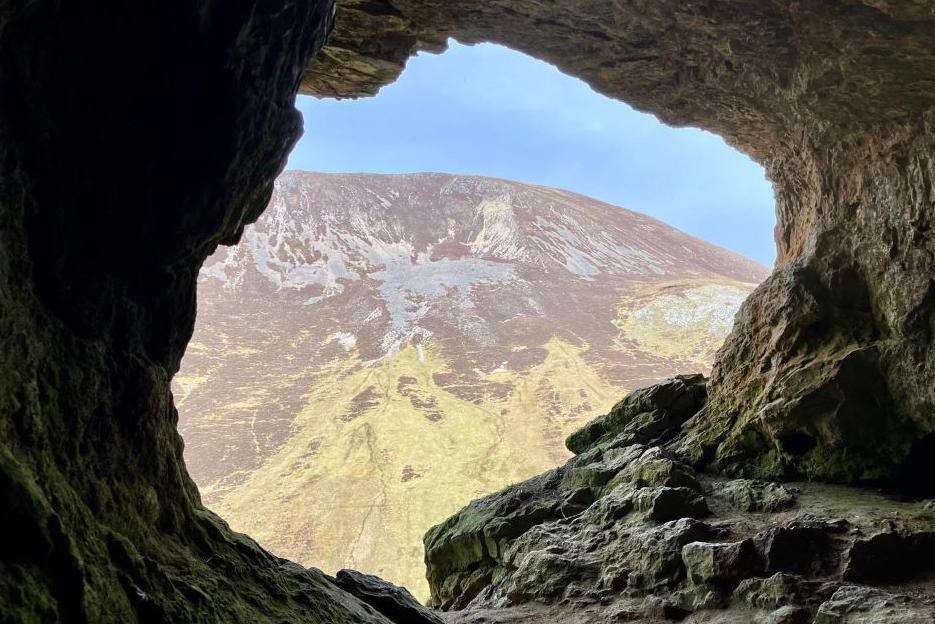
Looking out from one of the four large caves in the cliff
The area's system of caves was formed 200,000 years ago before the landscape was changed by the last ice age, which ended about 15,000 years ago.
Over the last 135 years the landscape - and what lies beneath it - has fascinated geologists and palaeontologists
Peach and Horne's discoveries in the caves included bear and reindeer bones.
More recent investigations found the remains of other animals that are long extinct in Scotland such as lemming, wild horses, lynx and wolf.

Discoveries over the years have included brown bear bones
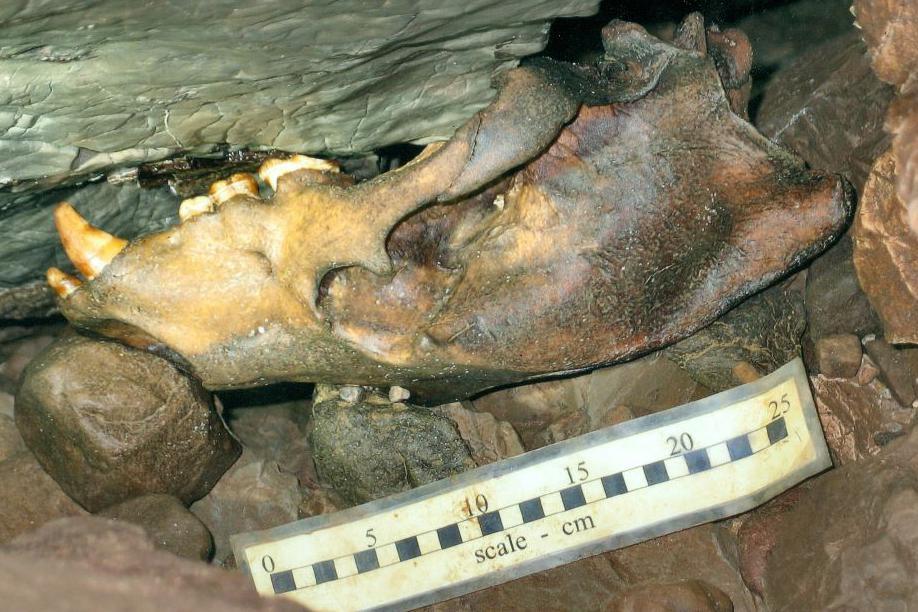
Part of the skull of a large brown bear
The 1889 excavations were followed by further digs in 1926-27.
Major discoveries were also made in 1967, when Kendal Caving Club explored a passage its members named Uamh an Claonaite.
Further underground areas were dived in 1975 and - by Grampian Speleological Group - in 1995.
Uamh an Claonaite passages are currently estimated to be about two miles long but could potentially extend further.
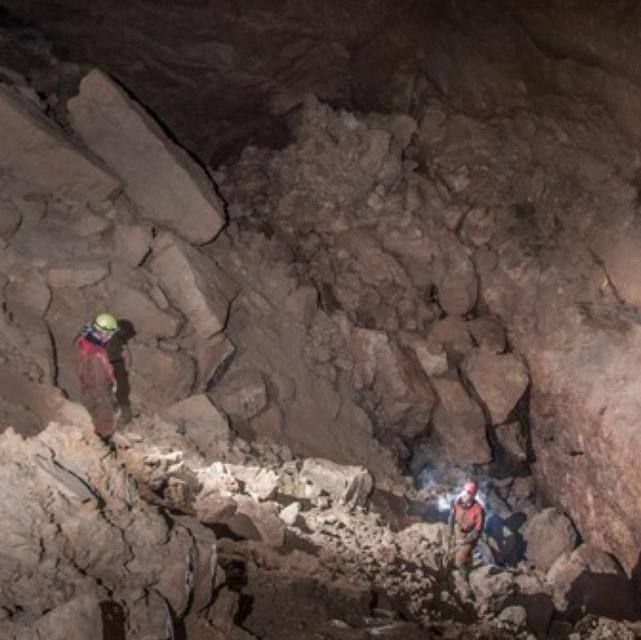
Inside a large chamber called the Great Northern Time Machine
Flooding is one of the many obstacles and hazards which hamper exploration of the area's underground systems.
But Alan Jeffreys of Scotland's oldest caving club - Grampian Speleological Group - said there is still scope for new discoveries.
"Passages lying some 20m beneath the Bone Caves might be extended in the future and perhaps even more passages might be found running north along the flank of Breabag (a nearby mountain).
"There is everything to play for."
The discoveries are recorded in the group's recent book, Caves of Assynt.
Mr Jeffreys added: "Our members have also opened a new cave system in the riverbed in the north fork of the Allt nan Uamh valley.
"This reveals that a possibly extensive network of phreatic passages, formed when completely full of water and now filled with glacial debris and mud, could lead us into some major, previously unsuspected territory."

Experts believe more new discoveries could be made in the area
Dr Tim Lawson, who has studied animals remains from the Bone Caves, said they got into the cave entrance chambers either by the creatures just walking in, or being carried there by predators.
He added: "The bears show that the caves were important hibernation sites over many thousands of years - we have individual bears dated to 1,700 years ago, 13,000, 26,000 and 45,000 years ago.
"The huge numbers of reindeer present show that Assynt was an important reindeer calving ground, again going back at least to before the last ice sheet grew and covered the land."
The honorary research assistant at Aberdeen's Geosciences faculty said the 1880s and 1920s excavations had yielded the largest amount of animal remains from anywhere in Scotland, and date back more than 50,000 years.
He said: "The site is a Scheduled Ancient Monument, so unauthorised digging is not allowed.
"However, I am now part of a project with the University of Aberdeen's geography and archaeology departments which is reassessing sites in the region.
"Hopefully we will get permission to do at least some limited re-excavation in the Bone Caves in the next couple of years."
He added: "Presently we have been looking at radiocarbon dated remains, and extending the dates to new specimens, which is yielding an interesting further twist to the story of the cave deposits."